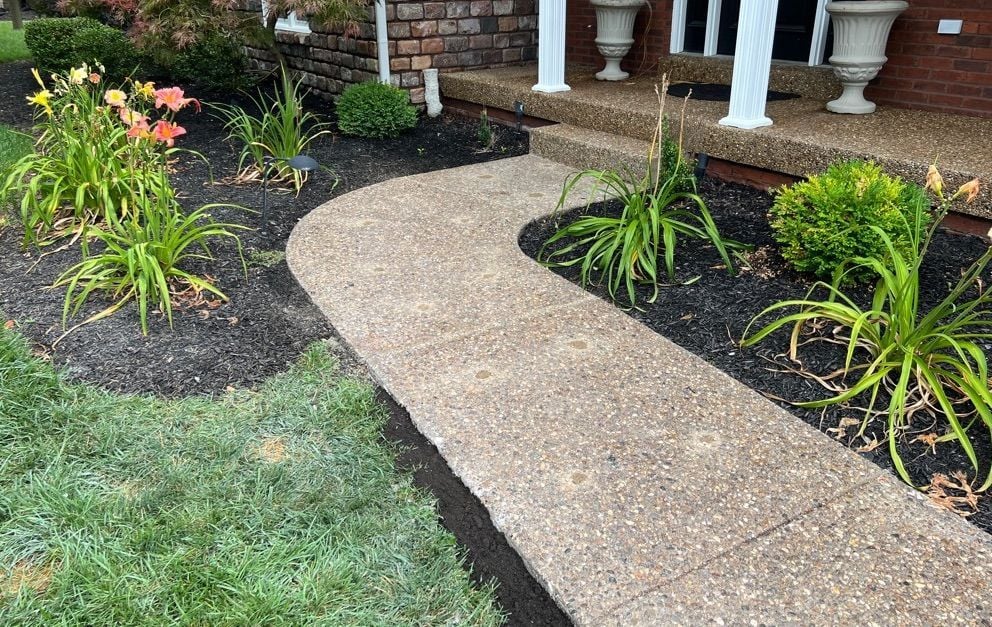
Five ways you can help prevent your concrete leveling repair from resettling.
The moment you've been waiting for has finally arrived - your concrete leveling repair is complete. You can now rest easily knowing that your once uneven and hazardous surfaces have been transformed, and your property is safer and looks great.
But following the magic of the concrete leveling repair, you may be asking yourself: Now what?
Post-concrete leveling, there are some essential steps you need to take to ensure your concrete leveling repair lasts as long as possible.
With over three decades of experience in the industry, A-1 Concrete Leveling has learned just what it takes to keep leveling repairs in good shape. In this article, we'll guide you through these necessary maintenance tasks to ensure your concrete remains level for the long run.
Why Concrete Leveling Repairs Fail
Before diving in, it’s important to get an idea of why concrete leveling repairs fail.
In a nutshell, it’s often due to the erosion of the soil underneath the concrete and leveling material, which can cause it to resettle. This soil erosion is what proper maintenance aims to avoid.
Be sure to read “Why Concrete Leveling Repairs Fail” if you want to learn more before digging into the list below.
1. Caulk Cracks and Joints
Cracks and open joints in concrete are potential pathways for water to flow beneath the slab, erode away the soil, and compromise the leveling repair. To help prevent this, follow these steps:
- Use Flexible Concrete Caulk: Caulk all cracks and joints in the slab, and opt for flexible concrete-specific caulk that works with the natural expansion and contraction of concrete while maintaining a watertight seal.
- Perform Regular Checks: Check the caulking periodically to make sure it's intact and maintains a tight seal.
- Touch Up As Needed: Add extra caulk to specific areas that may show wear or are pulling away from the concrete, rather than replacing all caulking at once.
2. Redirect Downspouts and Drainage
Direct water flow from downspouts and excessive runoff can run along the sides of concrete slabs and erode the soil underneath, threatening the stability of the repair. To help reduce this risk:
- Evaluate Downspout Placement: Ensure downspouts are not pointed directly at the concrete to prevent excess water flow along or under the slab.
- Utilize Downspout Extensions: Add extensions to downspouts, directing water further away from your home's foundation and concrete slabs.
- Implement French Drains or Catch Basins: Install the necessary drainage solutions to channel water away from your home and concrete.
3. Fix Leaky Gutters
Clogged or damaged gutters can cause water to overflow or leak onto your concrete, slowly eroding away at the soil underneath. To counteract this:
- Perform Regular Gutter Maintenance: Regularly clean and maintain your gutters to prevent overflow onto your concrete.
- Repair Broken Gutters: Address any gutter damage promptly to prevent water from spilling over or leaking.
4. Maintain Soil and Landscaping Levels
Maintaining a consistent grade of soil or landscaping around your concrete slabs is crucial for preventing water runoff from eroding away the soil under the repair. To reduce this risk:
- Add Additional Soil: Keep soil or landscaping levels even with concrete slabs to encourage water to run over them rather than flowing underneath and eroding the soil below.
5. Prevent and Manage Pest Infestations
Burrowing pests can disturb and erode away the soil beneath your concrete, potentially causing the concrete to resettle. To address this concern:
- Remove Pests: Mice, moles, and other pests create tunnels that loosen soil and compromise the repair. Get help from professional pest control services to eliminate burrowing pests and prevent future infestations.
While concrete leveling does fill voids under the slab, it's not a pest control solution and will not eliminate pests.
Your Next Steps
After the excitement of getting your concrete leveled has worn off, don’t forget about the five essential maintenance practices listed in this article.
Your safe, great-looking concrete has a far higher chance of staying in place if you make the time to take care of it, saving you time, money, and headaches in the long run.
Just so you know, A-1 also provides repair and maintenance services, like cleaning, sealing, and caulking in addition to concrete leveling.
If you’re interested in any of these for concrete, or you’d like to level more concrete around your property, click the link below to request a free onsite cost estimate:
Next up, be sure to check out this resource to learn more about maintaining your concrete in general: How to Maintain Your Concrete
We also have an entire e-book all about concrete repair and maintenance. Download it for free to learn more about how you can preserve your concrete: Concrete Repair and Maintenance: The Complete Guide
Sarah Etler joined A-1 Concrete Leveling after receiving her Bachelor of Arts degree in English from Northern Kentucky University. As A-1's Content Marketing Manager, she works closely with industry experts to produce content that will best answer questions related to concrete repair and maintenance practices. Sarah loves living a life full of discovery and is excited every day to see what new things she can learn and share with those around her.